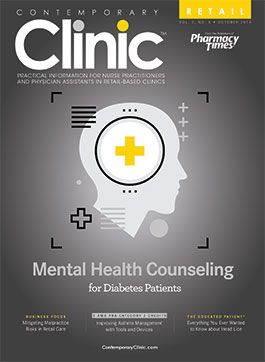Season of Changes in the Retail Health Industry
s summer’s subdued close meets fall’s booming commencement, we’ve found ourselves once again in the busy season.
As summer’s subdued close meets fall’s booming commencement, we’ve found ourselves once again in the busy season. It comes this time of year when a cacophony of foot traffic swells within our retail clinics in anticipation of the flu season and the eventual winter illnesses.
Schools are once again back in session, families are returning from holiday, and the role of the retail clinic stands ever closer to the forefront of health care coverage. As the leaves turn from their once green states, so too has the convenient care industry shed its once verdant rookie status within the industry, transforming into the veteran tenant it is today. From expanded access, to basic primary care in convenient medical settings, to providing excellent patient experiences while delivering care through retail clinicians, retail health continually meets the needs of patients and consumers in ways that the traditional medical community had not done prior to the proliferation of this new delivery setting.
Our latest report of clinic listings and hospital partnerships has found the reach of retail clinics to be well over 2100 clinics stretching across 43 states and with more than 100 hospital partnerships. Our work has expanded, but it’s far from complete. So long as patients in this country do not have access to affordable and convenient care, our work will continue. This mission is what has led the Convenient Care Association (CCA)’s perpetual need for partnership and collaboration. Such a strategy is what has allowed for our successes in the past, in particular those I had the privilege of witnessing at this past July’sConvenient Healthcare and Pharmacy Collaborative(CHPC). As we’ve reflected upon this event, we’ve reviewed feedback from our attendees and come to an understanding that even more can be done to improve collaboration among pharmacists, physician assistants (PAs), and nurse practitioners (NPs). As such, the CCA will be working in the coming months to be more inclusive to pharmacists and pharmacy assistants. In doing so, plans are already being made to have a more collaborative CHPC next year.
Along the same lines, it’s time for the retail health industry to more fully enter the 21st century. We’re proud to announce that we have begun building a new online platform that will allow for faster and improved online education programs. The system we’re calling NP Academy will comprise a series of modules that can be created and plugged in depending on the needs of the pharmacists, PAs, and NPs. More than action, we’ve learned that listening to the needs of our providers and partners has ensured ever more adaptive initiatives to further our mission. In the coming months, we will continue our partnership with the CDC to engage retail health clinics in pandemic influenza planning and response capabilities, and also continue our work with new awareness and educational initiatives surrounding the opioid epidemic, as well as topics surrounding asthma and allergy medications.
As we look ahead while also reflecting back, I am reminded of Fred Rogers’ eternal quote: “In times of stress, the best thing we can do for each other is to listen with our ears and our hearts and to be assured that our questions are just as important as our answers.” We are at our best when we are trying our best together.
Thank you for all that all of you do. I look forward to telling our stories and seeing them come together.
Tine Hansen-Turton serves as the founding executive director for the Convenient Care Association (CCA), the national trade association for the over 2000 private-sector retail clinics industry, which serves millions of individuals with basic health care services across the country, and has been coined by Harvard professor Clayton Christensen as a “disruptive health innovation.” She assists CCA with business and programmatic strategy, development, coordination and implementation, policy development, and state and national advocacy.

Knock Out Aches and Pains From Cold
October 30th 2019The symptoms associated with colds, most commonly congestion, coughing, sneezing, and sore throats, are the body's response when a virus exerts its effects on the immune system. Cold symptoms peak at about 1 to 2 days and last 7 to 10 days but can last up to 3 weeks.
COPD: Should a Clinician Treat or Refer?
October 27th 2019The Global Initiative for Chronic Obstructive Lung Disease (GOLD) defines the condition as follows: “COPD is a common, preventable, and treatable disease that is characterized by persistent respiratory symptoms and airflow limitation that is due to airway and/or alveolar abnormalities usually caused by significant exposure to noxious particles or gases.â€
Diabetic Ketoacidosis Is Preventable With Proper Treatment
October 24th 2019Cancer, diabetes, and heart disease account for a large portion of the $3.3 trillion annual US health care expenditures. In fact, 90% of these expenditures are due to chronic conditions. About 23 million people in the United States have diabetes, 7 million have undiagnosed diabetes, and 83 million have prediabetes.
What Are the Latest Influenza Vaccine Recommendations?
October 21st 2019Clinicians should recommend routine yearly influenza vaccinations for everyone 6 months or older who has no contraindications for the 2019-2020 influenza season starting at the end of October, according to the Advisory Committee on Immunization Practices.
What Is the Best Way to Treat Pharyngitis?
October 18th 2019There are many different causes of throat discomfort, but patients commonly associate a sore throat with an infection and may think that they need antibiotics. This unfortunately leads to unnecessary antibiotic prescribing when clinicians do not apply evidence-based practice.
